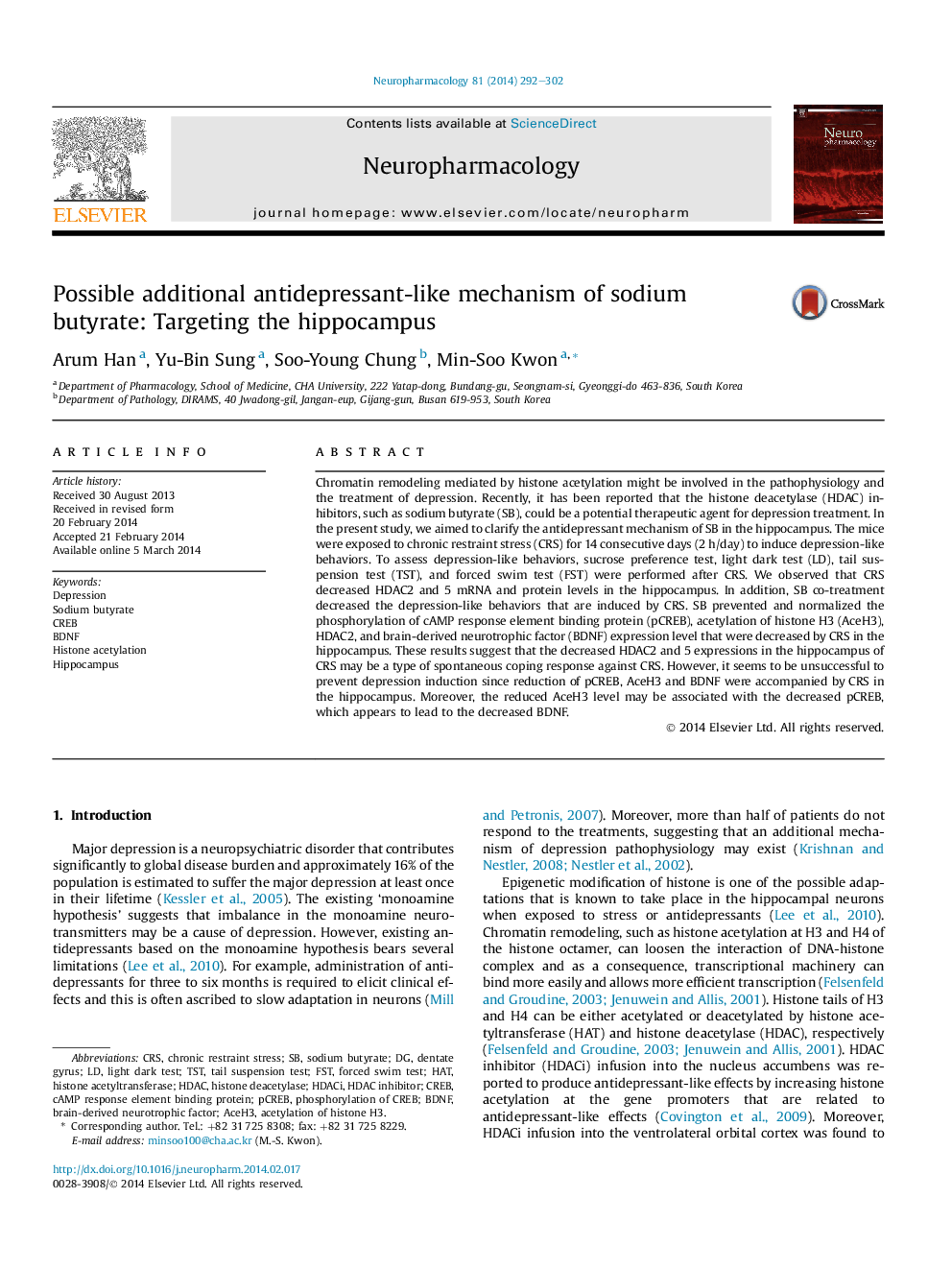| Article ID | Journal | Published Year | Pages | File Type |
|---|---|---|---|---|
| 2493256 | Neuropharmacology | 2014 | 11 Pages |
•We modeled depression using chronic restraint stress (CRS).•We examined changes in HDACs, pCREB, BDNF, and AceH3 upon CRS in the hippocampus.•Sodium butyrate reversed the changes by CRS especially in the dentate gyrus.•We report the possibility of additional antidepressant mechanism of sodium butyrate.
Chromatin remodeling mediated by histone acetylation might be involved in the pathophysiology and the treatment of depression. Recently, it has been reported that the histone deacetylase (HDAC) inhibitors, such as sodium butyrate (SB), could be a potential therapeutic agent for depression treatment. In the present study, we aimed to clarify the antidepressant mechanism of SB in the hippocampus. The mice were exposed to chronic restraint stress (CRS) for 14 consecutive days (2 h/day) to induce depression-like behaviors. To assess depression-like behaviors, sucrose preference test, light dark test (LD), tail suspension test (TST), and forced swim test (FST) were performed after CRS. We observed that CRS decreased HDAC2 and 5 mRNA and protein levels in the hippocampus. In addition, SB co-treatment decreased the depression-like behaviors that are induced by CRS. SB prevented and normalized the phosphorylation of cAMP response element binding protein (pCREB), acetylation of histone H3 (AceH3), HDAC2, and brain-derived neurotrophic factor (BDNF) expression level that were decreased by CRS in the hippocampus. These results suggest that the decreased HDAC2 and 5 expressions in the hippocampus of CRS may be a type of spontaneous coping response against CRS. However, it seems to be unsuccessful to prevent depression induction since reduction of pCREB, AceH3 and BDNF were accompanied by CRS in the hippocampus. Moreover, the reduced AceH3 level may be associated with the decreased pCREB, which appears to lead to the decreased BDNF.
